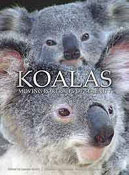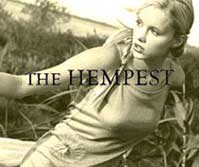The antiperspirant evolution

Concern regarding the use of antiperspirants has been a popular topic of discussion in the press recently. Research and consumer advocate groups routinely raise questions concerning ingredients, toxicity, long-term health risks as well as their effect on the environment.
The use of antiperspirants to control perspiration, a simple by product of our bodies’ natural temperature regulating process, is commonly used in western cultures to prevent rather than simply mask perspiration odour. The operative word “odour”, was the pivotal factor motivating ancient Egyptians to concoct fragrances by mixing citrus scents with spices that were pleasant to the senses. Ironically, in a virtual mirror example of social development an early, indigenous culture in Brazil known as The Bororo People, believed body odour was associated with the life force of a person, breath odor with the soul.
While the Bororo people used body odors as a social marker to identify individuals and their families, western society as early 1910 began marketing “deodourants” and “antiperspirants,” claiming “bad odour” was a hindrance to social success. By the mid eighties, a new consciousness began to emerge that focused on human and environmental health; people began to question the excessive use of chemicals in personal products and their cumulative effect on health and the environment.
Research now finds that there are indeed risks from the continued use of chemical ingredients contained in antiperspirants, ingredients such as; fragrance, BHT, propylene glycol, talc, silica, and peg-8 distearate are listed as potential hazards for gastrointestinal or liver function, causing a potential risk to the immune and nervous systems. So how can we control perspiration without exposing ourselves to the risks to our health or to social embarrassment?
There are antiperspirants on the market that are natural, chemical free, not tested on animals and environmentally friendly. Products such as ‘Herbal Magic,’ ‘Certain Dri Antiperspirant,’ and ‘Ban Classic Original’ antiperspirants have been assessed by the Environmental Working Group and pronounced to be products of “low” concern.
Another option, suggested in the book “How it all Vegan,” is to use a natural antiperspirant made from cornstarch and any essential oil of your choice. Using this “home” recipe ensures that your antiperspirant is completely biodegradable and the ingredients may be found in most households, which make it convenient as well as inexpensive.
For centuries, people have waged perfumed war on body odour by using fragrances from natural sources. Technological advances supplied us with a full arsenal of antiperspirants in a variety of applications from roll-ons to sprays, creams, pads and dry sticks, even gels, which promise to reduce or even eliminate perspiration. Today, however, people have begun to realize that technology’s attempt to address one social concern may have brought about another even more debilitating concern, the potential harmful affect on human and environmental health. If we are to overcome this potential risk to ourselves and the planet, it’s time, now, to take the initiative and educate ourselves, learn the issues and discover those natural products that are in harmony with the attempt to promote a healthy lifestyle for ourselves and the rest of the planet.
by Diane Cimetta
Greener Magazine



7:40 AM









<< Home